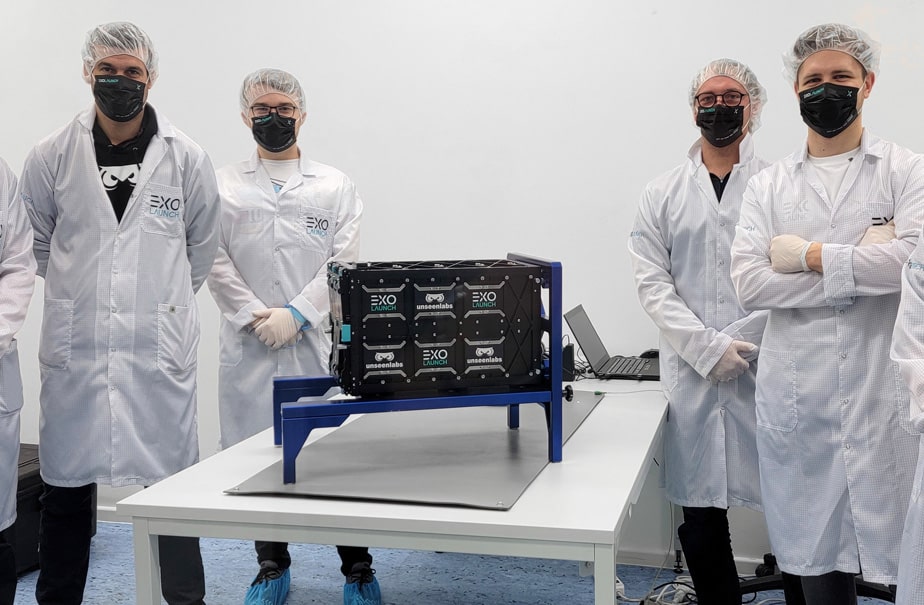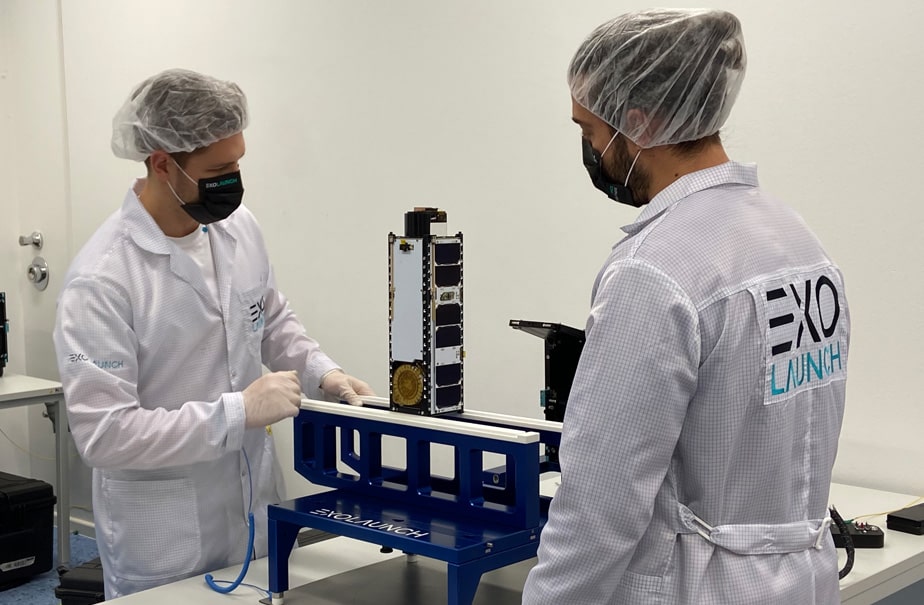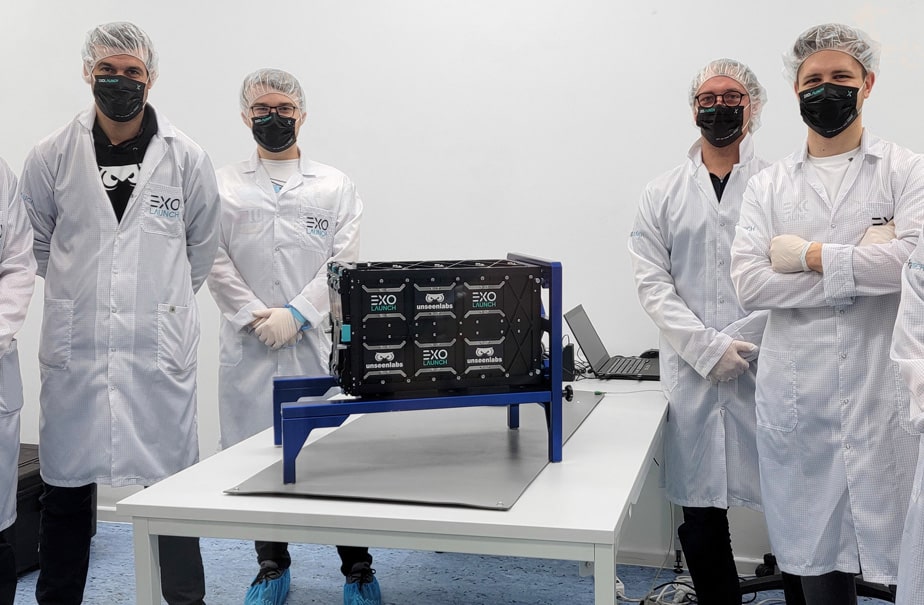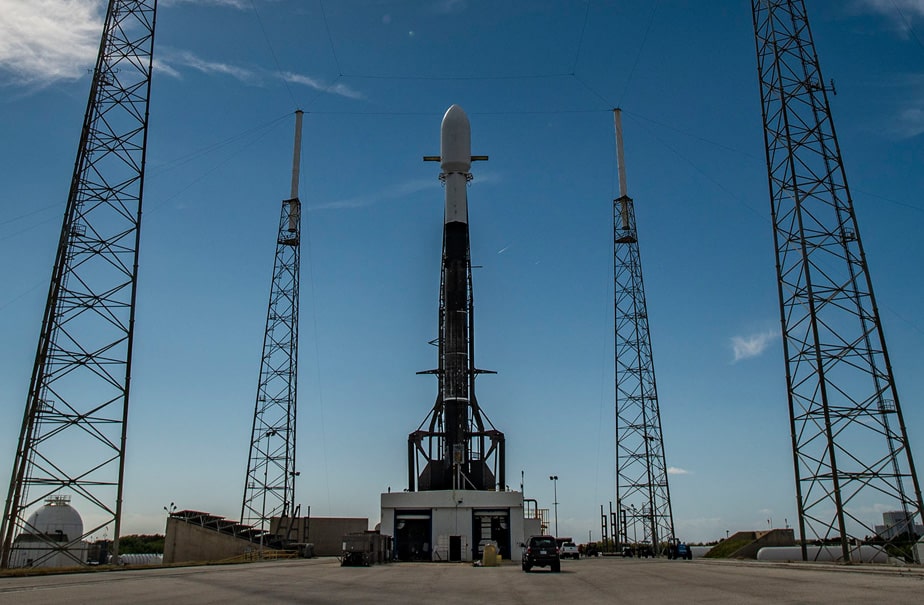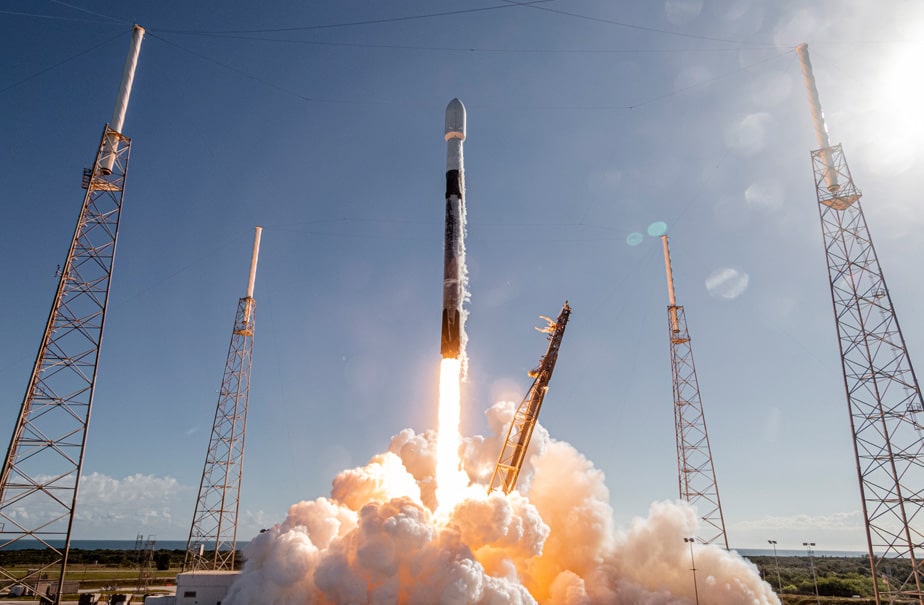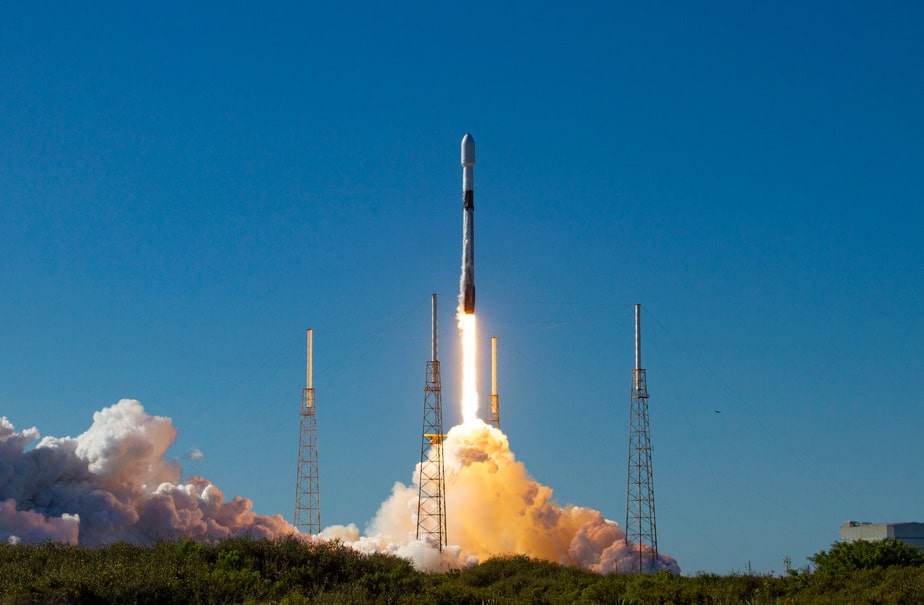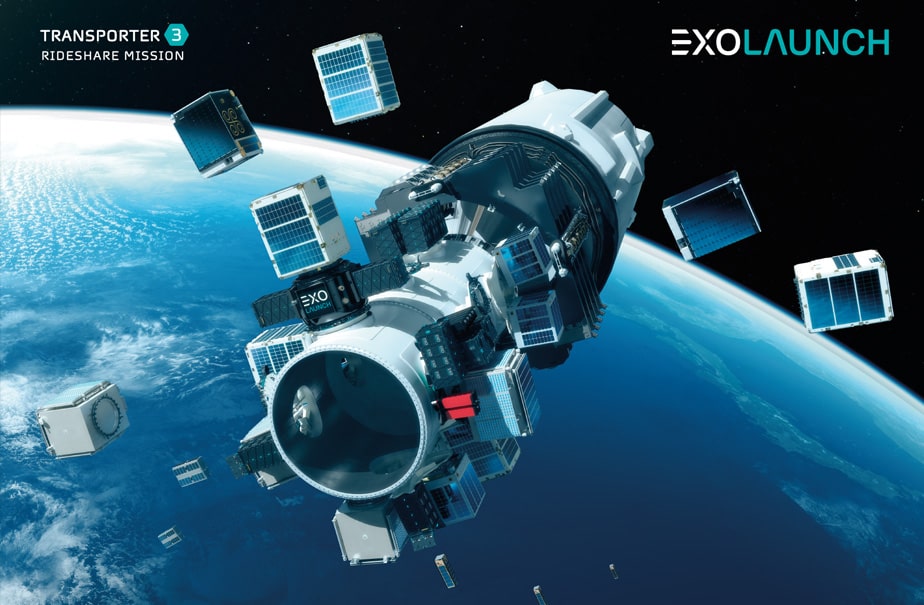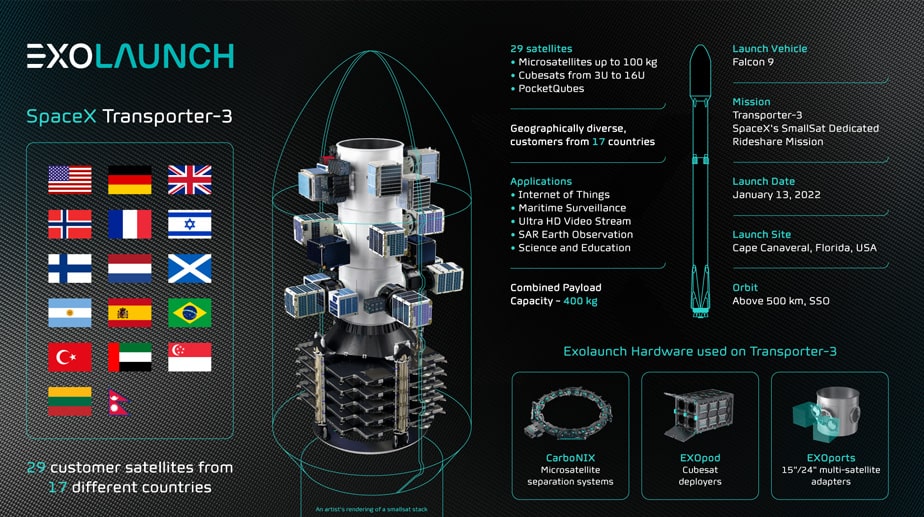TRANSPORTER-3 MISSION
FALCON 9
13th January 2022
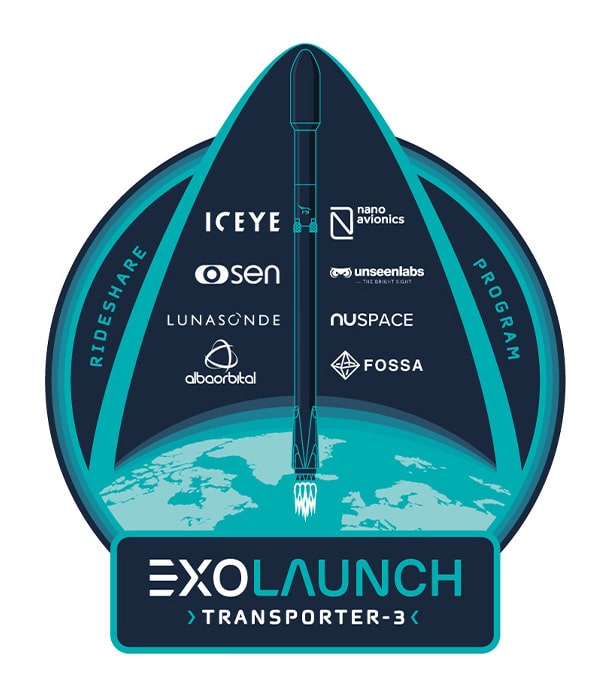
Third dedicated rideshare mission with SpaceX
Mission
SpaceX’s SmallSat
Rideshare Program
Transporter - 3
Launch site
Space Launch Complex 40, Cape Canaveral Space Force Station, Florida
Launch Vehicle
Falcon 9
Launch Period
January 2022
29 smallsats
Main payload
Smallsat rideshare mission, including 105 commercial and government spacecraft
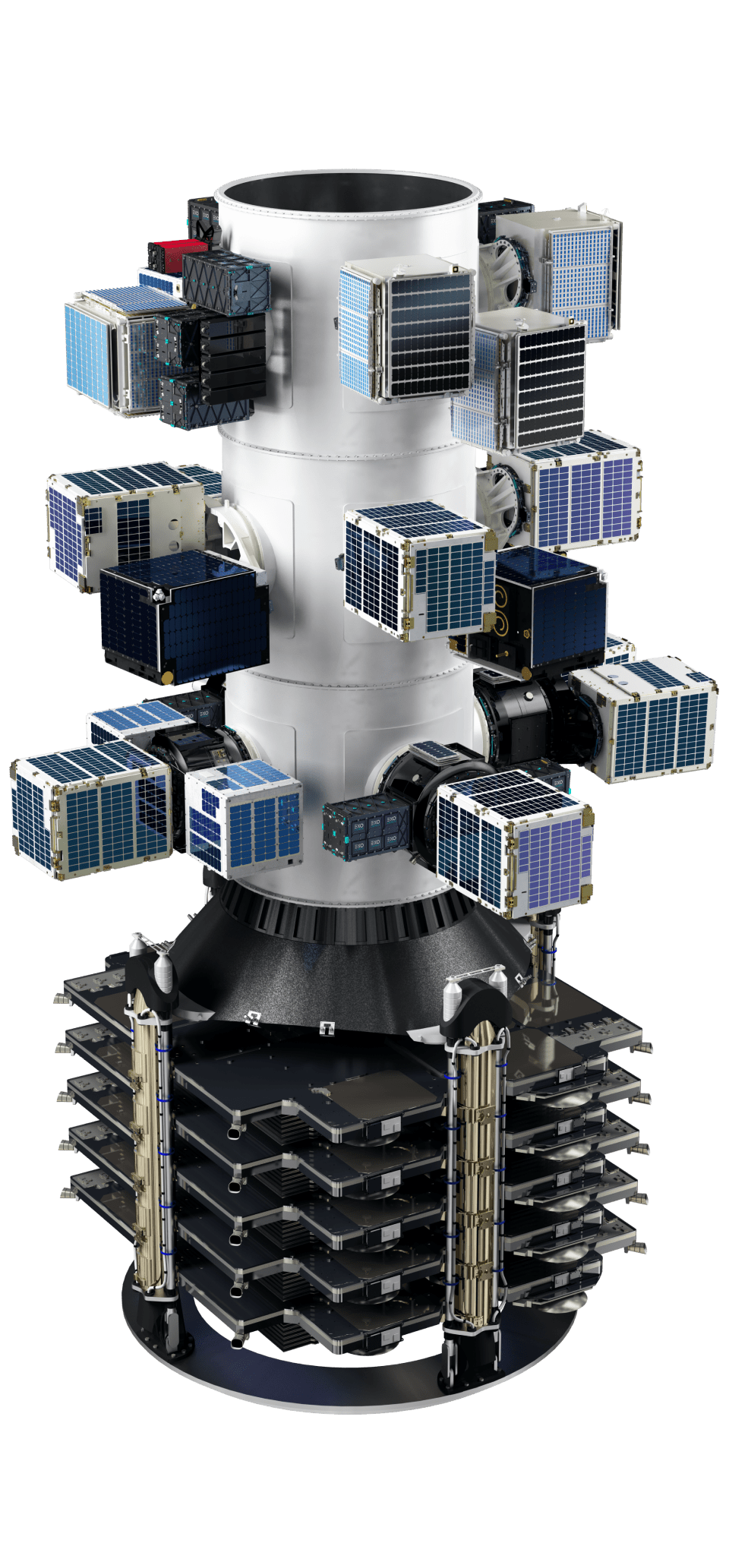
29 smallsats
Launch site
Space Launch Complex 40, Cape Canaveral Space Force Station, Florida
Main payload
Smallsat rideshare mission, including 105 commercial and government spacecraft
Mission overview
In its third dedicated rideshare mission with SpaceX, Exolaunch, the leading global provider of launch, in-space logistics and deployment services, integrated and launched 29 small satellites from customers across the globe. The company’s rideshare clusters aboard the SpaceX Transporter-3 mission were an amalgamation of microsats, cubesats (up to 16U) and PocketQubes. The combination of customers from 17 countries across four continents, and an unprecedented number of very sophisticated payloads made it the most technologically rich and geographically spread integration effort for the company yet.
Exolaunch’s rideshare customers’ payloads have top-notch technologies, including Internet of Things (IoT), Maritime Surveillance, Ultra HD Video Streaming, Synthetic-Aperture Radar (SAR) Earth Observation, and Science and Education.
The eclectic company medley incorporated returning customers such as NanoAvionics and ICEYE, as well as many notable new customers such as Sen, Unseenlabs, Lunasonde, NuSpace, FOSSA Systems and Alba Orbital. The companies behind this plethora of satellites are based in the USA, Finland, Great Britain, France, Lithuania, Spain, Scotland, Singapore, Argentina, Brazil, Germany, Israel, Nepal, the Netherlands, Norway, Turkey, and the UAE.
The launch of these 29 satellites brought the total number of satellites sent into orbit by Exolaunch close to two hundred.
This mission was also the third in a series of rideshare launches, which Exolaunch is manifesting on Falcon 9 as part of a Multi-Launch Agreement, which the company first signed with SpaceX in 2020 and extended at the end of 2021. For every Falcon 9 launch procured through this agreement, Exolaunch provides an end-to-end solution encompassing comprehensive rideshare mission management, satellite integration, and deployment services. Exolaunch has launched 59 satellites weighing nearly 1,500 kg on SpaceX’s first two record-breaking dedicated rideshare Transporter missions in 2021.
To maximize payload capacity and cost-effectiveness for their customers, Exolaunch used its recent product addition, EXOport, a flexible multi-satellite adapter designed to optimally accommodate microsats and cubesats on a single Falcon 9 port. Exolaunch also used its proprietary flight-proven separation systems CarboNIX, a next generation shock-free separation system, that to date has successfully separated 24 microsats, and the EXOpod, Exolaunch’s upgraded deployer with a heritage of 139 deployed cubesats. Together they allow Exolaunch to flawlessly deploy its customers’ satellites into their target orbits.
Exolaunch has manifested the following satellites on the Transporter-3 mission:
-
2 x ICEYE satellites
Two more satellites of an advanced radar imaging satellite constellation built and operated by ICEYE. ICEYE’s constellation represents the world's first small SAR satellite constellation and the largest fleet of SAR satellites in the world. ICEYE’s SAR satellite constellation provides different angle imaging multiple times a day for specified areas of interest. It is constantly growing and will provide previously unavailable imaging capabilities and access, allowing quick tactical acquisitions as well as very frequent global revisit rates.
-
1 x Sen satellite
Sen’s ETV-A1 Earth Observation satellite aims to livestream multiple perspectives of Earth with Ultra-High-Definition (UHD) video. The satellite can stream UHD video in real-time or record videos and downlink them during ground station passes. The satellite bus was built by NanoAvionics.
-
1 x satellite of The Norwegian University of Science and Technology
HYPSO-1 is a satellite by the Norwegian University of Science and Technology designed as a research project with a hyperspectral imager. The satellite bus was built by NanoAvionics.
-
1 x Unseenlabs satellite
BRO-5 is Unseenlabs’ 5th satellite aimed at improving the capabilities of the French company’s Maritime Surveillance constellation of 25 satellites.
-
1 x DEWA satellite
DEWA-SAT 1 is the first satellite by the Dubai Electricity & Water Authority (DEWA) carrying a Software Defined Radio payload designed to receive LoRa (long range) protocol messages. The satellite bus was built by NanoAvionics.
-
1 x Lunasonde satellite
Gossamer Piccolomini is part of the Gossamer constellation aimed at pioneering subsurface imaging while providing a sustainable approach to resource exploration.
-
1 x NuSpace satellite
NuX-1 is a Singaporean tech demo satellite designed and built by NuSpace to provide IoT connectivity to areas with limited to non-existent communications infrastructure thanks to the incorporated IoT LoRaWAN (long range wide area network) payload.
-
13 x Alba Orbital satellites
The largest PocketQube deployment in history with satellites manifested from a total of eight different countries.
-
DELFI-PQ: Satellite by the Delft University of Technology, Aerospace Engineering Faculty, for education and research.
-
EASAT-2 and HADES: Satellites by AMSAT EA (Spain's national amateur radio society) with the purpose of conducting an amateur radio communication experiment.
-
5 x UNICORNs: Satellites by Alba Orbital designed for: UNICORN-1: Tech demonstration of a new UHF radio system, UNICORN-2A: Earth Observation and UNICORN – 2D: commercial Earth Observation, UNICORN-2E: Commercial Earth Observation and UNICORN-2TA1: Orbital edge computing demonstrator satellite.
-
2 x SATLLA: Two educational satellites by the Israeli Ariel University designed for: SATLLA-2A: testing the concepts of Free Space Optical Communication and SATLLA-2B: introducing students to the “NewSpace” frontier with hands-on practice
-
GRIZU-263A: A satellite developed for educational and technology demonstration of a passive magnetic control subsystem by Turkey's Grizu-263 Space Team.
-
PION-BR1: A satellite by Brazilian company PION Labs Engenharia Ltda. designed for an IoT technology demonstration.
-
MDQUBESAT-1: A satellite by Innova Space (Argentina) designed for an IoT technology demonstration.
-
-
8 x FOSSA Systems satellites
Eight FOSSA PocketQube customer satellites, six of which will be using FOSSASat-2E’s high performance picosatellite platform.
-
6 x FOSSASAT satellites: FOSSASAT-2E1 / WISESAT-1, FOSSASAT-2E2 / WISESAT-2, FOSSASAT-2E3 / PILOT-1, FOSSASAT-2E4 / LAIKA, FOSSASAT-2E5 / MSRSAT-1 and FOSSASAT-2E6 are designed for the IoT Message Repeater and Platform Demonstrator.
-
CHALLENGER: A satellite by Mini-Cubes (USA), CHALLENGER is designed to serve as an experimental demonstrator of a windform structure, and carries Earth Observation payload.
-
SANOSAT-1: SANOSAT-1: An experimental amateur satellite by ORION Space (Nepal) designed for passive based attitude control and a radiometer.
-
featured customers
Ready to go
to space?
Let's chat. Get in touch and we'll be with you shortly.



